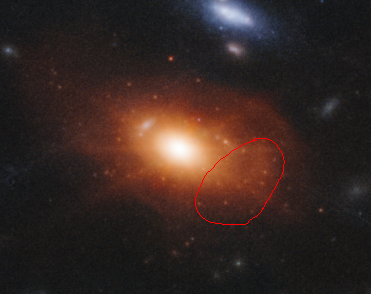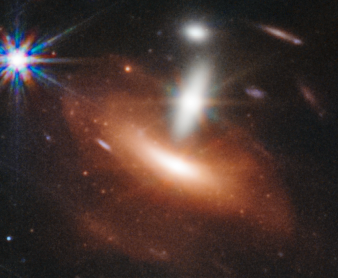In the first image released by the James Webb Space Telescope, some galaxies seem to have many bright dots - what are these? Young, huge stars? Supernovae? Just hot things behind the galaxy?
$\begingroup$
$\endgroup$
12
-
$\begingroup$ Regarding the bottom image: I too quickly gravitated to that when the pic was published. It appears to be a jet spurting from a quasar. Or just a coincidental positioning of different entities. $\endgroup$– White PrimeCommented Jul 12, 2022 at 10:20
-
4$\begingroup$ I doubt the dots are stars, I would suggest perhaps clusters but haven't got anything to prove that. I doubt its a jet, note that it has a central bright region (note the diffraction spikes) so its probably just a coincidental alignment with another galaxy, and the rbight spot is the center of that Galaxy.. $\endgroup$– RobCommented Jul 12, 2022 at 11:44
-
2$\begingroup$ It's the diffraction pattern that you usually only see from bright stars, but JWST is so sensitive and has so high resolution that the nuclei of some bright and compact galaxies show it as well. It will probably be a bit of a problem removing them. $\endgroup$– pelaCommented Jul 12, 2022 at 12:11
-
3$\begingroup$ @Prallax Ah, sorry, I misunderstood! No, those things are probably globular (star) clusters, belonging to the galaxy. It's quite amazing that they're resolved :) $\endgroup$– pelaCommented Jul 14, 2022 at 8:31
-
2$\begingroup$ @pela great! Keep us updated! $\endgroup$– PrallaxCommented Jul 14, 2022 at 11:58
|
Show 7 more comments
1 Answer
$\begingroup$
$\endgroup$
1
Myung Gyoon Lee et al 2022 seem confident that they are globular clusters.
Faisst et al 2022 seem to also consider the possibility that they could be stripped cores of dwarf galaxies.
They are both analyzing small dots near a galaxy in the SMACS field, but is different from the one in the OP. I am not sure these findings can also be applied to the picture in the OP.
-
1

